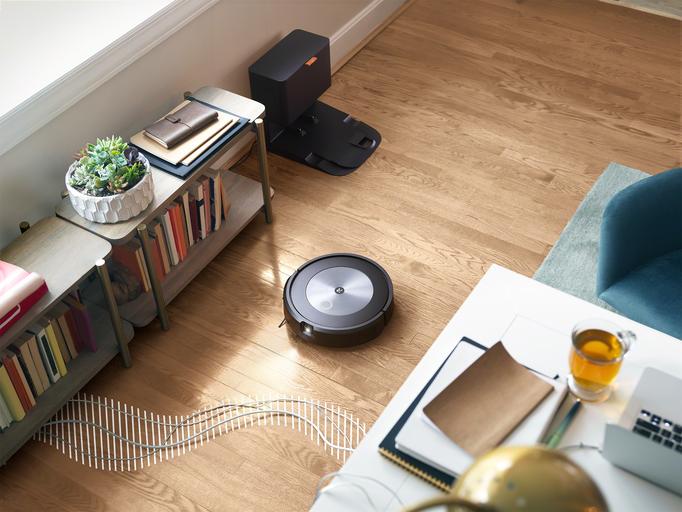Using a robot vacuum has always been a bit hazardous for pet owners. Leaving a robovac to do its thing in your absence can be a problem if your less-than-perfectly-trained dog or cat also doesitsthing while you’re out. A quick Google of “Roomba dog poop” gives you some idea of what the outcome can be, as unheeding robots with spinning brushes barrel into the mess and proceed to spread it liberally around the house.
But now, Roomba-maker iRobot say it’s fixed this scatological problem. The company’s latest robovac, the Roomba j7+, uses built-in machine vision and AI to identify and avoid pet messes of all sorts. “It’s a big deal for us,” iRobot founder and CEO Colin Angle tellsThe Verge. “We’ve been working on it for a long time and we’reguaranteeing that it works.”
This last point is particularly important. Competing robovacs like the Roborock S6 MaxV and 360 Smart Life robot vacuum advertise the same mess-avoiding capabilities, but Angle is skeptical that they’re fully reliable. He says iRobot has been working on the problem for years, even creating a huge database of fake pet mess to train their AI vision systems.
“Robotics is supposed to be glamorous, but I don’t know how many Play-Doh models of poo we created,” says Angle. “Many, many thousands.” The result, though, is unwavering confidence in the company’s poop-identifying capabilities. “Our competition are starting to claim that they do this, too, but it’s more like [they do it] at CES with the right lighting,” he says. “We felt the need to really put a line in the sand and say, this is real, it’s not a gimmick. If you have a pet we’re not going to let you down here.”
The fact that avoiding dog mess is the headline feature of iRobot’s latest robot vacuum cleaner gives some suggestion about the problems and progress with these machines. They’ve certainly become more efficient and useful over the years, but there are still some basic teething problems that show up when the rubber hits the carpet.

iRobot is hoping to fix some of these with an update to its navigation and control software, known as iRobot Genius. This was initially launched in August last year for compatible Roombas, and it not only maps users’ homes to allow for more granular cleaning instructions, but uses built-in machine vision to identify furniture and specific “clean zones.”
Version 3.0 of iRobot Genius, which launches today as a free upgrade, adds a number of new features. These include a “Quiet Drive” mode which stops the robot from making a noise when heading to and from cleaning jobs; cleaning time estimates for specific rooms; improved mapping capabilities, including suggested room names based on the robot’s ability to identify items of furniture; and a new “Clean While I’m Away” function. This means, if people like, they can allow iRobot access to their phone location, and whenever they leave the house it will trigger a cleaning session.
The biggest update, though, is only for the new Roomba j7+ which uses a new camera to identify not only dog mess but other hazardous obstacles, like socks, shoes, and headphones. Again, this is done using onboard machine vision, but it does require some action on the part of the owner. If the Roomba finds an unexpected obstacle, it’ll ask via the connected app whether it’s a temporary or permanent fixture. If it’s permanent (like dangling TV cables), then the machine will automatically create a no-clean zone for it.
As Angle explains, it’s all about making iRobot’s products feel “like a partner” rather than a tool — trusted services that can anticipate owners’ wishes. “The idea is, we know what time it is, we know where we are in the home, and we have an idea of the floor plan in rooms,” he says. “We should start applying respectful rules to our technology and holding our technology to the same types of accountability that we hold each other to in the home.”
It’s also how the company wants to differentiate itself from cheaper competitors. The new Roomba j7+ costs $849 with a base station that holds up to 60 days’ worth of dirt, which is many multiples compared to the price tag of basic robovacs. Angle says iRobot’s free software upgrades, now and in the future, should help persuade customers to choose them.
In addition to the features listed above, the new Roomba j7+ also has a new high-end design, a simplified control system (one button instead of three), Bluetooth LE capability to simplify onboarding, and a new beveled rim that’s supposed to stop the machine from getting stuck under cabinets and refrigerators. The Roomba j7+ goes on sale today in the US and Canada from iRobot’s website and will be available for purchase at selected retailers from September 19th. It can also be bought without the cleaning base station for $649.








